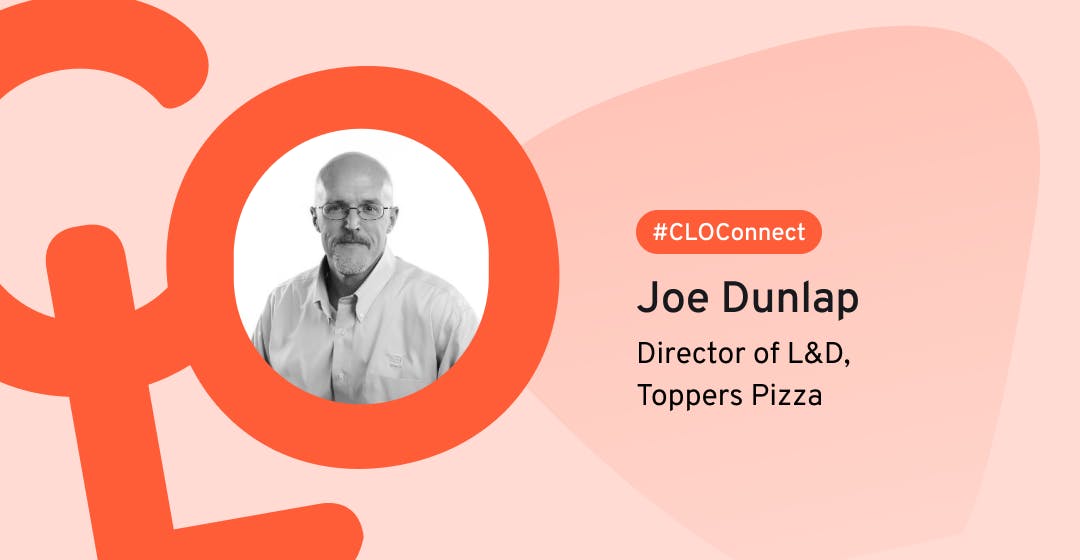
How Toppers Pizza Drove a 40% Increase in Employee Engagement through Crowdsourcing Videos
In the food services industry, the stakes are always high. There’s more competition in the market than ever before, and building and maintaining a loyal customer base means delivering consistently excellent experiences, every day, without fail.
So, how can companies stay on top of these expectations? How can you make sure you’re beating out the competition with food service that is timely, comforting, and memorable?
Recently, I had the chance to chat to Joe Dunlap, Director of L&D at Toppers Pizza, about how he and his team use video crowdsourcing to boost employee engagement, increase their performance, and get more delicious pizza into the hands of waiting customers.
We got started by discussing some of the things that make Toppers Pizza unique in the market.
Corporate and franchise: the two sides of Toppers Pizza
“I’m the Director of Learning and Development for Toppers Pizza, which is a growing franchise pizza chain,” says Joe. “We’re different from the other chains, because we have two operating models: our franchise model, and our corporate model.”
“From an L&D perspective, we’re dealing with independent business owners who are running a franchise, so it’s their business and their source of income. Then we have our corporate stores, which are owned by Toppers Pizza directly.”
As Joe explains, these two operating models can create some unique L&D demands. “You need L&D solutions that are scalable across both the franchise businesses and the corporate stores. You have to create little nuances that reflect the differences between the two sides of Toppers Pizza, such as building specific leadership priorities into our learning resources.”
Adding to this challenge is the company’s ambitious plan for growth. “We have about 5,000 people, and we’re growing,” says Joe. “In the long term, we’re planning to have 700 stores by the end of 2025, which will expand our employee footprint to around 15,000.”
As Director of L&D, Joe has a critical role to play in the plan to triple the Toppers Pizza workforce over the next five years. The biggest task of all? Equipping every team in both the corporate and franchise stores with the training they need to get pizzas to customers faster.
In the long term, we’re planning to have 700 stores by the end of 2025, which will expand our employee footprint to around 15,000.
You can never have enough expert insights! Check out our ebook to find out How L&D Can Help You Build a Strong Company Culture
The challenge: getting pizzas to customers faster
As someone with a background in the food services industry, I know how hard it can be to scale operations while delivering consistently great customer experiences. It’s a lot easier to do amazing things with just a few stores, but things become more complicated as you grow.
According to Joe, the key operational challenge he’s focusing on to support the growth of Toppers Pizza is reducing ‘out-the-door’ time, and getting food to customers as soon as possible.
Reducing ‘out-the-door’ time
“Recently, we had to come up with a new way to reduce our ‘out-the-door’ time on our makeline,” says Joe. “That’s one of the most important measurements: how much time does it take from the order coming in to the pizza getting ‘bumped’, or completed?”
“We were noticing a trend in the wrong direction, with our ‘out-the-door’ time taking longer than it should. Typically, our executive team would get together and propose solutions to the issue, but in this particular situation we decided to do something different.”
That’s one of the most important measurements: how much time does it take from the order coming in to the pizza getting ‘bumped’, or completed?
The solution: crowdsourcing the best pizza-making processes and techniques
As Joe explains, he and the rest of the Toppers Pizza executive team needed a clearer view of the problem before they could find the right solution. So, they asked their teams to weigh in.
“To get a comprehensive view of the challenge, we reached out to each one of our stores and asked them to share videos describing how they actually went through the entire makeline process,” says Joe. “But, we had to make one thing clear: there was no judgment. We weren’t out to criticize anyone’s technique–we just wanted to see how people were going about it.”
According to Joe, this crowdsourcing project really struck a chord with Toppers Pizza employees. “It opened up an opportunity for people to record the way they work, and to share their particular tips and techniques for everyone’s benefit. In the first week alone we had a dozen submissions, and in total we received over 30 videos from different stores.”
“These submissions allowed us a much deeper insight into how our businesses operate, and allowed both our franchise and corporate coaches to work with these stores to personalize their practice. Now, we have much greater insights into the way these businesses are working.”
Beyond driving these new insights, the project also led to some amazing engagement results.
Related: Decentralized Learning in Practice: How Visa Leverages User-Generated Content
It opened up an opportunity for people to record the way they work, and to share their particular tips and techniques for everyone’s benefit.
The impact: a 40% increase in employee engagement
For Toppers Pizza, this crowdsourcing project has led to some real gains in key L&D metrics. “In the first month, we saw an increase of about 4% in proficiency improvement, and in our second month, we’re looking at an improvement of over 10%,” says Joe. “In the past, we might have seen some improvements for about two to three weeks. But these are lasting changes.”
“We’ve also seen a 7% drop in our month over month resignations in comparison to our previous years. Part of that is the excitement and the engagement of our workforce, because people know their ideas are being heard. We’ve created a transparent suggestions board, so that people can submit their ideas and see when we’re starting to work on them.”
The biggest result of all? Greater employee engagement in learning resources. “We’ve seen a 40% increase in engagement across both the corporate and franchise stores in terms of our site usage and the resources we provide to people.”
For Toppers Pizza, this 40% increase is only the beginning. “We don’t want to stop where we are,” says Joe. “We want to open up more channels for everyone across the organization to share their ideas, not just operationally but personally. We want to find new topics and suggestions, connect people through dialogue, and help people commit to continuous learning.”
We’ve seen a 40% increase in engagement across both the corporate and franchise stores in terms of our site usage and the resources we provide to people.
More engagement, enthusiasm, and excitement
“The initial crowdsourcing project wound up ballooning and leading to something much bigger,” says Joe. “We’ve created an environment for people to share their insights and their practices.”
“Now, our stores are asking us for more ways to submit their ideas, including recording videos for specific topic categories. We’re seeing a huge increase in engagement, enthusiasm, and excitement.”
This kind of crowdsourcing is a key part of Collaborative Learning. When you give people a fast and easy way to exchange ideas and leverage best practices, it’s a lot easier to build a community around problem-solving and continuous learning.
And speaking of continuous learning...
Related: How Dermira Keeps Employee Engagement High During COVID-19
Now, our stores are asking us for more ways to submit their ideas, including recording videos for specific topic categories. We’re seeing a huge increase in engagement, enthusiasm, and excitement.
Using cross-functional teams help drive continuous learning
The Toppers Pizza L&D team played a key role in driving this crowdsourcing project forward. But getting the project over the line involved other teams pitching in, too.
“We were focused on workforce enablement,” says Joe. “In practice, that meant looking at the entire ecosystem that surrounds a particular employee. We knew improving our ‘out-the-door’ time wasn’t just going to be a question of learning or training. There were other factors involved too, for example, our store setup, our management culture, and our technology.”
Another key part of the project? Reviewing employee submissions for wider insights. “We were receiving the videos and watching how people were working, and we started noticing little things, like small improvements we could make,” says Joe. “This way, we could build a team from the various departments at our corporate headquarters to work on it.”
“We worked on these user stories across all departments, and aligned ourselves during a three-week iteration to develop the right solutions. Then, we delivered our results and sought feedback from our audience on whether we were on the right track, or if we needed to pivot.”
For Joe, this project showed the true value of cross-functional teams. “Now, we’re looking at creating these cross-functional teams for all of our projects. It really helps us look at the entire ecosystem our frontline people are working in, and drive continuous learning by addressing all of the things that are inhibiting our performance.”
Now, we’re looking at creating these cross-functional teams for all of our projects. It really helps us look at the entire ecosystem our frontline people are working in, and drive continuous learning by addressing all of the things that are inhibiting our performance.
Thanks again to Joe for taking the time to share his insights!
While you’re here, check out my expert interviews with Felicia White of Church’s Chicken about how she achieved 93% training rates during the COVID-19 pandemic, and with Lenn Moorehead-Rosenberg of WinCo Foods about supporting frontline employees in times of crisis.
Want more peer insights on transforming workplace learning? Check out #CLOConnect, our interview series with top L&D leaders on driving growth and scaling culture through Collaborative Learning. Or you can subscribe (below 👇) to our weekly newsletter to receive our latest posts directly in your inbox.


